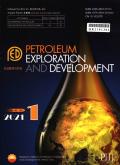Deep learning for pore-scale two-phase flow: Modelling drainage in realistic porous media
IF 7
Q1 ENERGY & FUELS
引用次数: 0
Abstract
In order to predict phase distributions within complex pore structures during two-phase capillary-dominated drainage, we select subsamples from computerized tomography (CT) images of rocks and simulated porous media, and develop a pore morphology-based simulator (PMS) to create a diverse dataset of phase distributions. With pixel size, interfacial tension, contact angle, and pressure as input parameters, convolutional neural network (CNN), recurrent neural network (RNN) and vision transformer (ViT) are transformed, trained and evaluated to select the optimal model for predicting phase distribution. It is found that commonly used CNN and RNN have deficiencies in capturing phase connectivity. Subsequently, we develop a higher-dimensional vision transformer (HD-ViT) that drains pores solely based on their size, regardless of their spatial location, with phase connectivity enforced as a post-processing step. This approach enables inference for images of varying sizes and resolutions with inlet-outlet setup at any coordinate directions. We demonstrate that HD-ViT maintains its effectiveness, accuracy and speed advantage on larger sandstone and carbonate images, compared with the microfluidic-based displacement experiment. In the end, we train and validate a 3D version of the model.
孔隙尺度两相流的深度学习:模拟现实多孔介质中的排水
为了预测两相毛细管主导排水过程中复杂孔隙结构内的相分布,我们从岩石和模拟多孔介质的计算机断层扫描(CT)图像中选取子样本,并开发了基于孔隙形态的模拟器(PMS),以创建多样化的相分布数据集。以像素尺寸、界面张力、接触角和压力为输入参数,对卷积神经网络(CNN)、循环神经网络(RNN)和视觉转换器(ViT)进行转换、训练和评估,以选择预测相分布的最佳模型。结果发现,常用的 CNN 和 RNN 在捕捉相位连接性方面存在不足。随后,我们开发了一种高维视觉转换器(HD-ViT),该转换器只根据孔隙的大小进行排水,而不考虑其空间位置,并将相位连通性作为后处理步骤。这种方法可以推断出不同尺寸和分辨率的图像,并在任意坐标方向设置入口和出口。我们证明,与基于微流体的位移实验相比,HD-ViT 在较大的砂岩和碳酸盐图像上保持了其有效性、准确性和速度优势。最后,我们对模型的三维版本进行了训练和验证。
本文章由计算机程序翻译,如有差异,请以英文原文为准。
求助全文
约1分钟内获得全文
求助全文

 求助内容:
求助内容: 应助结果提醒方式:
应助结果提醒方式:


